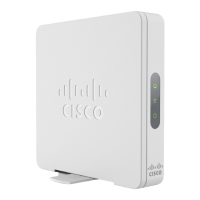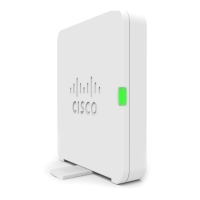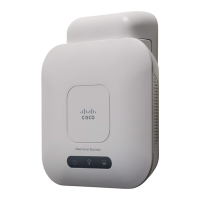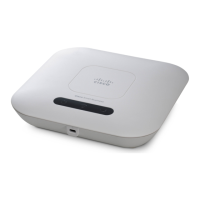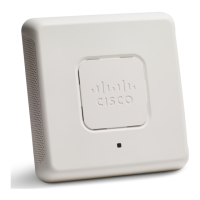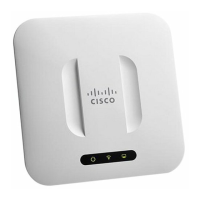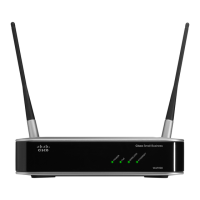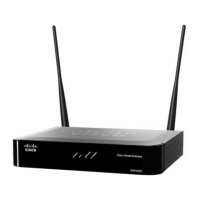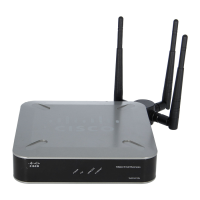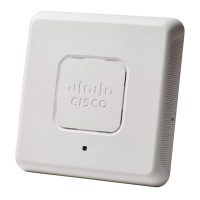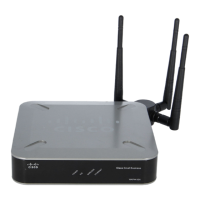• If you select TFTP, enter a file name to assign to the download file, and enter the TFTP server IPv4
address where the file will be downloaded.
You can also upload a certificate file (with a .pem extension) from your computer to the WAP device. In the
Transfer SSL Certificate from (PC to Device) area, select HTTP/HTTPS or TFTP as the upload option
and click Transfer.
• For HTTP/HTTPS, browse to the network location, select the file, and click Transfer.
• For TFTP, enter the file name and the TFTP Server IPv4 Address, then click Transfer. The filename
cannot contain the following characters: spaces, <, >, |, \, : , (, ), &, ; , #, ? aszxaa, *, and two or more
successive periods.
A confirmation appears when the upload was successful.
SNMP / SNMPv2c Settings
SNMP defines a standard for recording, storing, and sharing information about network devices. SNMP
facilitates network management, troubleshooting, and maintenance. The WAP supports SNMP and can function
as an SNMP managed device for seamless integration into network management systems.
Use the SNMP/SNMPv2c Settings section to enable SNMP and configure the basic protocol settings.
To configure general SNMP settings:
Step 1 Select Management> SNMP Settings.
Step 2 Check Enable to enable SNMP.
Step 3 Enter the UDP Port for the SNMP traffic. The default is 161. However, you can configure it so that the agent listens to
the requests on a different port. The valid range is from 1025 to 65535.
Step 4 In the SNMPv2c Settings area, configure the SNMPv2c settings:
• Read-only Community — Enter a read-only community name for the SNMPv2 access. The valid range is 1 to 256
alphanumeric and special characters.
The community name acts as a simple authentication feature to restrict the devices on the network that can request
data from the SNMP agent. The name functions as a password, and the request is assumed to be authentic if the
sender knows the password.
• Read-write Community — Enter a read-write community name to be used for SNMP set requests. The valid range
is from 1 to 256 alphanumeric and special characters. Setting a community name is similar to setting a password.
Only the requests from the machines that identify themselves with this community name are accepted.
• Management Station — Determines which stations can access the WAP device through SNMP. Choose one of
these options:
• All — All stations can access the WAP device through SNMP.
• User Defined — The set of user defined SNMP requests that are permitted.
• NMS IPv4 Address/Name — Enter the IPv4 IP address, DNS host name, or subnet of the network management
system (NMS).
Cisco WAP150 Wireless-AC/N Dual Radio Access Point with PoE / Cisco WAP361 Wireless-AC/N Dual Radio Wall Plate Access Point with PoE
33
System Configuration
SNMP / SNMPv2c Settings
